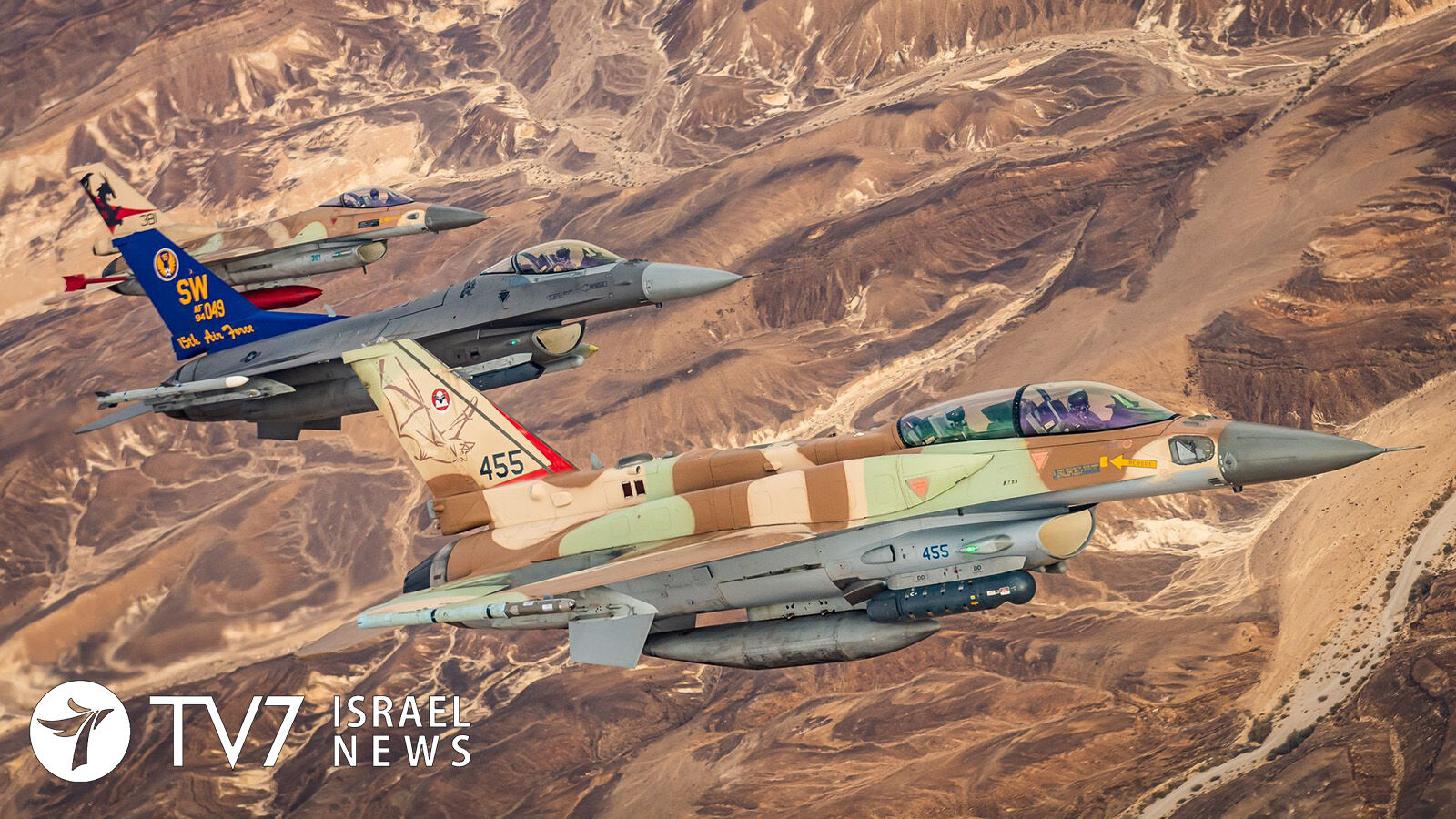The joint international exercise concluded this past week.
By Erin Viner
“Desert Falcon” was held at Uvda Air Force Base in cooperation with the United States Air Force Central Command (AFCENT), announced the IDF yesterday.
The Israeli Air Force (IAF) base is located north of Eilat, and drill was primarily conducted in the skies over the Negev Desert.
According to a statement the IDF sent to TV7, “the exercise included the IAF’s 122nd, 119th, and 115th Squadrons, and the American 55th Fighter Jet Squadron, which operates F-16 fighter jets.”
“Israeli and American aircrews flew wing-to-wing and trained for various aerial scenarios and strikes. added the statement, including “simulated joint responses to aerial threats and strikes on targets, through education, cooperation, and mutual growth.”
“The exercise marked a significant step for the strategic cooperation and operational readiness for the IAF and the USAF,” underscored the Israeli military.
The simulated airstrikes and mid-air dogfights are the latest joint activity between the allies, since Israel was officially reclassified from the area of responsibility last September from EUCOM (European Command, which now concentrates on Russia and its threats against Europe and NATO) to the Bahrain-based CENTCOM (US Central Command); although Israel still conducts joint maneuvers with EUCOM.
The Israeli, United Arab Emirates’ and Bahraini navies participated in a 5-day multilateral CENTCOM maritime security operations exercise in the Red Sea led by the US 5th Fleet last November.
IAF F-15 fighter jets also escorted 2 USAF B-1B Supersonic Strategic Heavy Bombers and a KC-10 re-fueler through Israeli skies en route to the Persian Gulf on at least 2 occasions, in what was widely seen as a message to Iran.
“The joint flight demonstrates (the continued U.S.-Israel) cooperation, which (Jerusalem regards as) crucial to the security of Israel and the Middle East,” said the Israeli military last November.
The B-1B bomber is 1 of 3 heavy strategic bombers utilized by the US Air Force. Due to the aircraft’s capacity to carry nuclear payloads and delivery systems, it is also uniquely capable of striking numerous targets simultaneously over a relatively broad span of territory, it is utilized to deter US enemies at times of heightened tensions – including the Islamic Republic of Iran.
In March 2021, a US Army Central Command (CENTOM) Spokesperson confirmed to TV7 that 2 US B-52s departed from Minot Air Base in North Dakota, in the fourth such deployment in 2021.
In addition to IAF fighter jets, the pair of US heavy bombers – which are capable of launching nuclear payloads – were also escorted by military aircraft from other nations including Saudi Arabia and Qatar, according to a CENTCOM statement. While “Iran” was not specifically mentioned, CENTCOM said the flight was intended to “deter aggression and reassure partners and allies of the US military’s commitment to security in the region.”
US Naval Forces Central Command (NAVCENT) Commander Vice Admiral Brad Cooper visited Israel last week amid mounting tensions with Iran and its regional proxies.
During his visit, Admiral Cooper held a lengthy work-meeting with IDF Chief of Staff Lieutenant General Aviv Kochavi, alongside Commander in Chief of the Israeli Navy, Vice Admiral David Saar Salama and other senior officers and intelligence practitioners.
The NAVCENT leader conveyed Washington’s strong “commitment to the enduring strategic relationship” with Jerusalem, stressing that the US-Israel “maritime partnership is built on trust and shared interests in maintaining security and stability in the surrounding seas.”
Gen. Kochavi echoed the significance of “maritime cooperation between the IDF and the US militaries,” and pledged Israel’s support of American forces deployed throughout the region in a joint mission to “continue to face the challenges ahead in order to maintain stability in the Middle East.”
